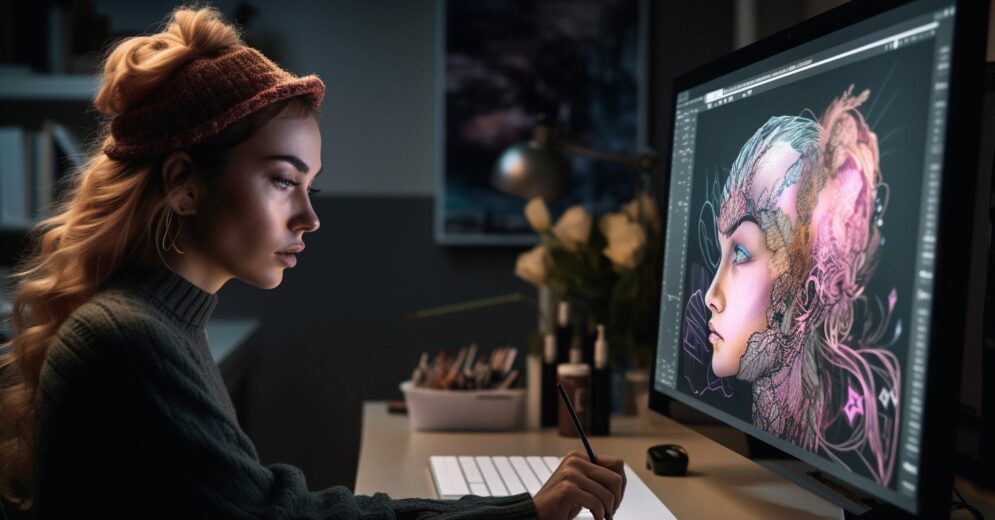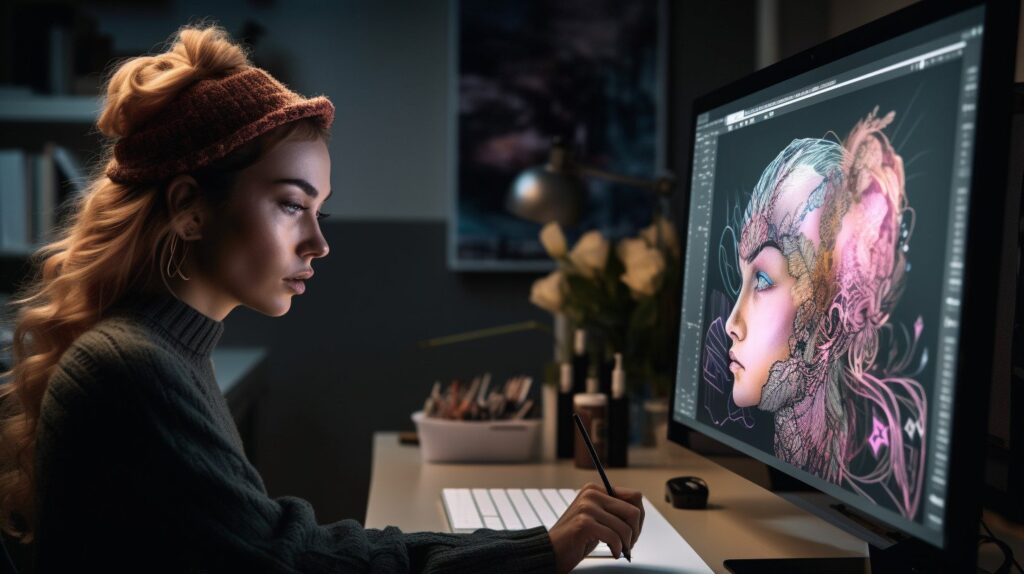Artificial intelligence (AI) is increasingly present in our lives, with the purpose of doing the most diverse tasks. Writing a text, answering a question, suggesting a traffic route, or improving the management of an area are just a few examples of how AI has already become part of our routine.
But how is AI changing the way we see and make art?
More recently, AI-based tools that are capable of creating digital art have become famous, and this is an area where it has shown to be promising.
With the use of AI techniques and tools, artists and creators can develop new forms of expression and expand the limits of art as we know it today.
In this article, we will explore the impact of AI on the creation of digital art and analyze some of the main tools and techniques currently used in the creative process.
We will talk about the challenges and concerns of this technology in the creation of art and discuss what the future holds for this constantly evolving area.
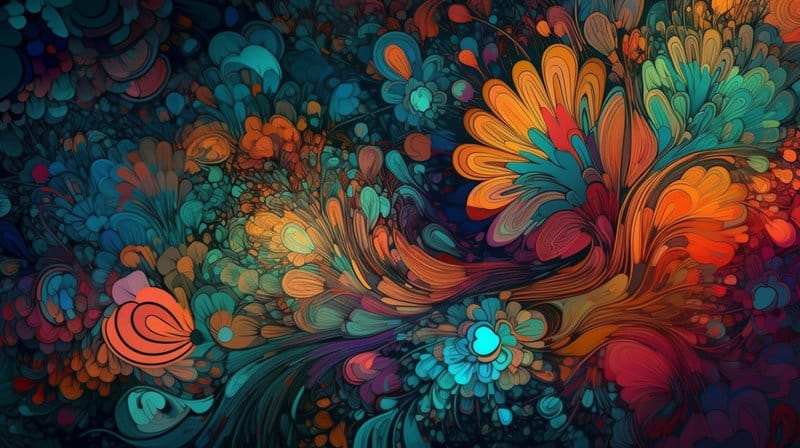
What is Artificial Intelligence?
The first question we should answer here is: what is Artificial Intelligence?
Despite the popularity of this technology, there may still be an association of AI with science fiction movies or something beyond our imagination.
But the truth is that artificial intelligence is already part of our daily lives and we often don't even realize it.
By artificial intelligence, it is understood that there are a series of technologies that allow the execution of "intellectual" activities without human interaction.
By "intellectual," we can say reasoning, analysis, decision-making, and problem-solving.
Some of the technologies behind artificial intelligence are also already known, such as:
- Neural networks;
- Machine learning;
- Algorithms.
Despite the term still causing awe or even some fear, artificial intelligence has been with us for some time, participating in our lives in many ways:
- Adjusting traffic routes;
- Suggesting movies, series, and products;
- As virtual assistants;
- In facial recognition systems;
- In search engines for content ranking.
More recently, artificial intelligence has entered another level, more interactive and performing functions more related to humans, such as writing texts, answering questions, and creating digital art, on platforms such as:
- MidJourney;
- ChatGPT;
- DALL-E;
- Stable Diffusion.
- MidJourney;
- ChatGPT;
- DALL-E;
- Stable Diffusion.
In this sense, how does AI manage to create illustrations and art so quickly, easily, and impressively?
How can AI create artwork?
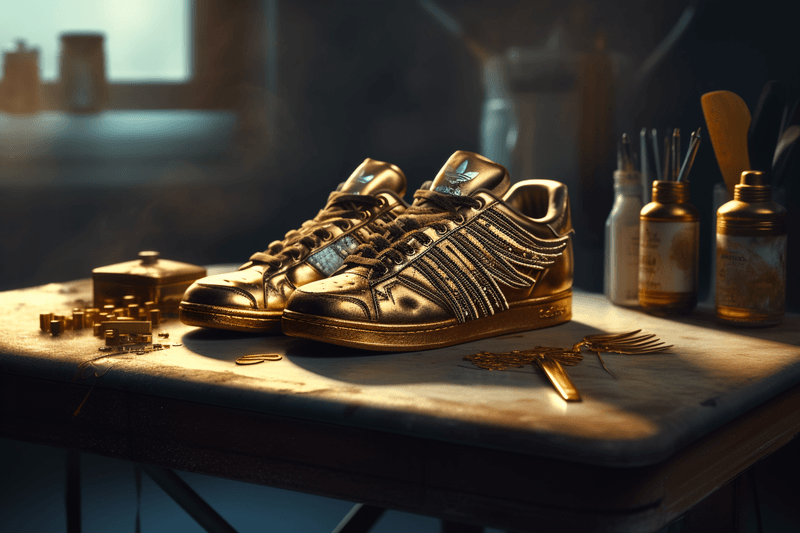
The creation of art using artificial intelligence (AI) can be seen as a form of collaboration between humans and machines.
In this sense, there are many tools and techniques that allow artists to explore and expand their creativity through AI. Some of these are:
- Generative Adversarial Networks (GANs);
- Image style algorithms;
- Computer-aided drawing tools;
- Image classification systems;
- Art chatbots.
Generative Adversarial Networks (GANs)
One of the most commonly used techniques for creating AI-driven art is the Generative Adversarial Network (GAN).
GANs consist of two neural networks – a generator and a discriminator – that work together to generate images that look like the training/reference images provided by the artist.
The generator network creates random images and sends them to the discriminator network, which distinguishes these images from real images.
Over time, the generator network adjusts its outputs to produce images that are increasingly similar to the training images.
In this way, a large variety of images can be created quickly and efficiently.

Image Style Algorithms
Image-style algorithms are another popular technique for creating AI-driven art.
These algorithms allow artists to apply different image styles to a single image, creating unique and interesting visual effects.
Style algorithms work by combining two images – one for content and one for style – into a single output image.
The content image provides the overall structure, while the style image provides information about the stylistic features that the artist wants to apply.
It sounds other-worldly, but surely you have used a photo filter on some social network, haven't you?

Reading Tip: Social Media And Our Mental Health
Computer-Aided Drawing Tools
Computer-aided drawing tools have also been widely used in creating AI-driven art.
These tools allow artists to draw and paint digitally, with the computer giving suggestions for colors, textures, and styles.
There are several such tools on the market, from complex software like Adobe Photoshop and Corel Painter to simpler and more accessible apps like Procreate.
In these cases, AI is used to analyze the work of artists and give suggestions that can help achieve the desired result.

Image Classification Systems
This is another popular technique in creating AI-generated art.
These systems are trained to recognize patterns in large datasets of images and can be used by artists to generate new images based on specific categories.
For example, an artist may use a system trained on bird images to generate new bird images, or an image classification system for landscapes to generate new landscapes.
These systems can be extremely useful in the creation of conceptual and abstract art.
Art Chatbots
Chatbots are computer programs that interact with users in natural language. They can be programmed to generate text, images, or sound.
Art chatbots allow people to create art in collaboration with the machine by providing information and guidance to the chatbot which, in turn, generates a response based on its programming.
This interaction between people and the chatbot can generate unpredictable and surprising results, which can be very useful for creating experimental and innovative art.

Other tools and techniques
In addition to the tools and techniques mentioned above, there are many other ways to create AI-generated art. Some examples include:
- Convolutional neural networks (CNNs): used for image analysis and object classification;
- Art recommendation systems: used to recommend works of art based on people's preferences;
- Poetry generation systems: used to generate poems based on natural language models.
Each of these tools and techniques presents its own advantages and limitations, and the choice will depend on the specific needs and goals of the artist.
Overall, these tools and techniques allow artists to experiment with new approaches and expand their creative horizons.
In this sense, AI can be seen as a way to widen the reach and efficiency of the creative process, allowing artists to develop more difficult and complex works in less time, or with fewer resources.
However, it is important to remember that AI is not a replacement for human creativity. It is just a tool that can be used to help artists expand and achieve their creative goals.
The impact of AI on art creation

AI has had a huge impact on the creation of art, both by accelerating the creative process and changing traditional concepts of authorship and authenticity in art.
Acceleration of the creative process
One of the biggest advantages of AI in art creation is the acceleration of the creative process.
AI tools and techniques allow artists to create works in a fraction of the time it would take using traditional techniques.
For example, GANs can generate realistic images in a matter of seconds, whereas manually creating a similar image could take hours or even days.
The use of image classification systems can allow artists to create a large number of images in a short amount of time, which can be pretty useful for projects that require multiple options and proposals for clients.
This acceleration of the creative process allows artists to create more and experiment with more ideas, opening up new possibilities for artistic expression.
Reading Tip: Chiaroscuro: The Art of Light and Shadow
Change in concepts of authorship and authenticity
AI is also changing traditional concepts of authorship and authenticity in art.
Since AI-generated artworks are created based on algorithms and training models, many people question whether these works can truly be considered the "creations" of the artist.
Also, AI tools allow people to create accurate copies of existing works of art, raising questions about the authenticity of these copies and their artistic value.
These debates are particularly relevant in the art market, where the value of a work often depends on its authenticity and the artist's signature.

Increase in diversity in art creation
Another impact of AI on art creation is the increase in diversity in the production of works.
AI can help overcome linguistic, cultural, and geographic barriers that often prevent artists from having access to the resources and means to create their art.
AI tools can also allow artists with physical disabilities or technical limitations to create works more easily and with greater accessibility.
This diversity in the production of works of art leads to more representation and inclusion in the artistic community, allowing a wider range of voices and perspectives to be heard.
A good example of how AI can make the creation of artwork easier is Runway, a tool that helps create images and videos in collaboration with artificial intelligence.
Runway even promoted the first film festival created in collaboration with AI.
Challenges and concerns remain regarding the use of AI in art creation
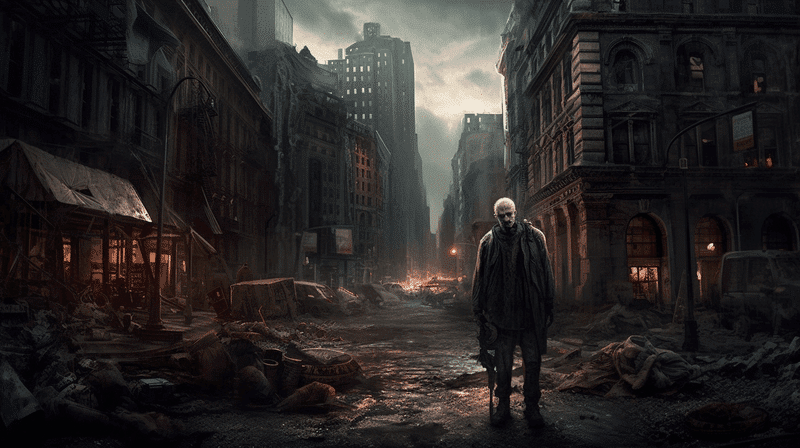
Despite the benefits of AI in creating art, there are significant challenges and concerns that need to be considered, such as standardization and privacy issues.
It’s always important to remember that every new technology or innovation has its challenges and the flip side of the coin, and artificial intelligence is no exception to this rule.
Therefore, it’s important to understand these concerns and how we can overcome them, making the best use of this technology.
In this sense, the main challenges and concerns are listed below.
Standardization and homogenization of art
One of the most common concerns related to the use of AI in creating art is the possibility that it will lead to standardization and homogenization of art.
AI is based on algorithms and training models. In this way, it can lead to mass production of art, where the generated works are all very similar to each other.
This can reduce the originality and diversity of art, making it less interesting and less valuable to the general public.
In addition, standardization and homogenization can reduce creativity and innovation in the art industry, making it less relevant and less attractive to new talent.

Substitution of human artists
Another concern related to the use of AI in creating art is the possibility that it will replace human artists.
As we have seen, AI tools allow people to create art more quickly and efficiently.
In this sense, there may be a reduction in demand for human artists and a decrease in job opportunities in the market.
Besides, substituting human artists can lead to a loss of the uniqueness and subjectivity of art. This can diminish the importance of individual expression and personal experiences in creating art.
Privacy and data security

The use of AI in creating art also raises concerns regarding privacy and data security.
Some AI tools require the use of sensitive data from people, such as biometric information, to function properly.
However, the collection and storage of this data can lead to privacy violations and the exploitation of this data for malicious purposes.
In addition, the algorithms and training models used in AI can be biased and reflect existing prejudices and stereotypes in society.
In this sense, the use of AI can lead to discrimination and injustice in creating art.
Ethical and responsibility issues
There are also ethical and responsibility issues involved in the use of AI in creating art.
For example, creating or manipulating images with the goal of deceiving or harming people, the so-called fake news.
In fact, this issue is already quite concerning and this type of unethical behavior is seen everywhere, especially online.

In addition, images generated by AI can raise questions about authorship and authenticity, which can affect the value and meaning of these works.
Therefore, it is essential that artists, researchers, and society as a whole discuss these issues and find ways to use AI in an ethical and responsible manner.
Reading Tip: Human-Computer Interaction: Everything You Need To Know
Inequality and access to technology
The use of AI in creating art can also lead to greater inequality and limited access to technology.
So far, AI is an advanced and difficult-to-access technology for many people and communities. This difficulty in access can lead to a disparity in the ability to create and produce art using these tools.
In addition, inequality can lead to a reduction in diversity in art production and the exclusion of underrepresented groups in the industry.
Therefore, it is important to ensure that access to AI tools is equitable and inclusive.
The future of AI in creating art

As we have seen, AI has the potential to transform the art industry and the way art is created and consumed.
In this sense, one of the most interesting possibilities is a collaboration between human artists and AI.
Instead of looking at it with suspicion, artists can use AI to create works of art more quickly and efficiently, allowing them to focus more on creativity and innovation.
In addition, AI can open up paths to new ideas and insights, providing new creative perspectives that may not have been possible otherwise.
In this way, AI can promote collaboration between artists and machines, bringing more diversity and originality to artistic productions, as well as optimization and improvement of processes.
More personalization
Another future possibility of AI in creating art is the personalization of art.
AI can be used to create works of art that are easily adapted to the individual preferences and interests of people, whether they are artists or their clients.
Who has never had to redo an art multiple times until getting client approval? AI can reduce the time spent in this type of situation.
This way, there is greater satisfaction and a more engaging and meaningful art experience for artists, designers, and clients.

More Accessibility
We have already discussed this issue a few times during this article, but it is always good to highlight tools that can improve people's access to a certain field.
AI also has the potential to increase the accessibility of art, making it more tangible for people with disabilities or special needs.
For example, visually impaired people can use AI to create incredible works of art, experiencing art in a completely new way.
In addition, accessibility also includes situations of geographical difficulty. In this sense, AI allows people in remote or underrepresented areas to have access to art.
With all this, it is important to recognize that AI is a technology in constant evolution.

That said, there are likely to be significant advances in art creation technology in the coming years.
As AI technology becomes more advanced, it is likely to become even more useful and effective in creating art, allowing artists to create more complex, creative, and interesting works of art.
In addition, new AI tools and techniques are likely to be developed, allowing artists to create new types of works of art that have not yet been imagined.
AI and Photoshop: Collaboration for High-Impact Art
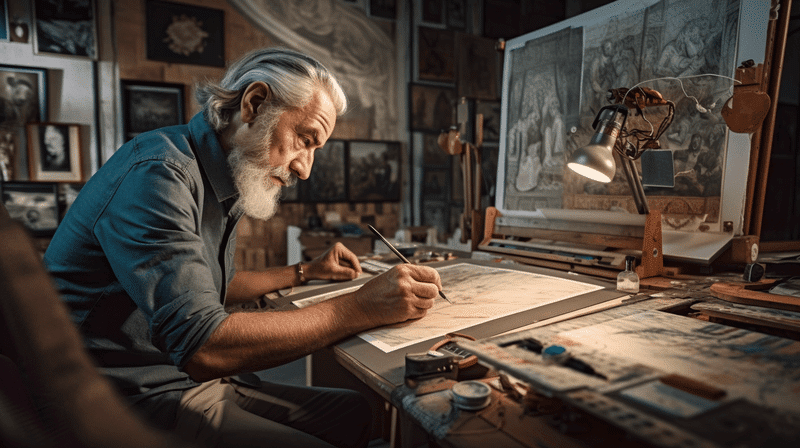
Photoshop is one of the most popular and widely used image editing software in the world of art and design.
In recent years, the use of AI with Photoshop to create high-impact art has become increasingly common.
AI can be used in several ways with Photoshop, from improving the quality of existing images to creating completely new images.
Reading Tip: 9 Soft Skills to Stand Out as a Designer
Improving the quality of existing images
AI can be used to improve the quality of existing images, allowing artists to create art from something that is already established.
For example, it is possible to remove noise and imperfections from an image, improve its sharpness and clarity, and adjust contrast and brightness for better results.
This allows artists to improve existing images quickly and efficiently, saving time and effort and allowing them to focus more on creativity and innovation.
Creating completely new images
In addition to improving existing images, AI can also create completely new images with Photoshop.
For example, creating new logos, illustrations for a website, or abstract images to work on a technique or concept. All of this can be done with AI and Photoshop.
AI can also be used to create text descriptions, allowing artists to create highly personalized images tailored to the needs of their clients.
Automated editing tools
AI can also be used with Photoshop to create automated editing tools, allowing artists to edit images more quickly and efficiently.
For example, it is possible to identify objects and automatically remove the background of an image, saving time and effort.
Besides, AI can create custom tools that adapt to people's needs and preferences, allowing them to edit images even more efficiently and creatively.

New Adobe tool: Firefly
Taking advantage of the wave of AI-based art creation tools, Adobe launched Adobe Firefly in March 2023, a software for creating illustrations through artificial intelligence.
Initially, in the Beta phase, Firefly proposes the creation of images according to the description given by the user, and, from there, it can be improved with different filters and resources.
The idea is to integrate Firefly with other creative programs such as Photoshop, Illustrator, and Premiere.
The big difference is that Firefly's AI was trained with millions of images from Adobe Stock, which provides good learning and repertoire for the tool.
Canva: New AI features
It's not just Adobe that is updating its products to include features that use the power of artificial intelligence.
Canva has also announced new features, which include AI-based tools. For example, Magic Eraser removes any object from your image, and Magic Design creates several customized templates.
In addition, Canva's new features allow for the better and more optimized management of your company's visual identity. It's worth checking out.
Don't worry and work together with AI
We know that all these changes and developments bring some fear and anxiety to people, especially designers, and artists.
In the blink of an eye, it seems that the world is ending and we are losing our jobs and talents to artificial intelligence.
But don't be afraid! These developments need to be understood and we must work together with them, as we described some benefits of AI for designers and artists in this article.
However, we know that it is difficult to understand the best way to work together with AI to improve your work and art.
Therefore, we will publish another content on the subject showing how we – Aela – are working together with AI, improving and optimizing our projects.
To receive the content as soon as it is published, sign up for our Newsletter.
Don't worry, if you understand that AI can help you improve and optimize your work processes, your art will become increasingly unique and interesting.
Stay tuned for this next content that we will publish because we will show the step-by-step of our process.

Conclusion
AI is revolutionizing the way art is created, consumed, and appreciated.
With the use of advanced machine learning techniques, AI can help artists create incredible images, generate creative ideas and automate routine image editing tasks.
At the same time, AI also presents challenges and concerns, such as job loss for image editors and graphic designers and the perpetuation of bias and inequalities in AI-generated images.
However, the potential of AI in art creation is undeniable.
AI can open up new possibilities for artists and designers, allowing them to create stunning and abstract works of art.
As AI continues to evolve, it is important that artists and designers embrace the technology and work to make sure it is used in an ethical and responsible way.
AI has the potential to transform the way art is created and consumed, and it is important that this transformation takes place in a fair and equitable way.
In short, AI is becoming increasingly important in the creation of digital art and it is exciting to think about the possibilities that technology can bring to the art world.
AI can be seen as a complement to human creativity, not as a substitute, and can help make art more accessible and inclusive.
However, it is up to artists and designers to work together with technology to ensure that the impact of AI on art is positive and beneficial for everyone.

